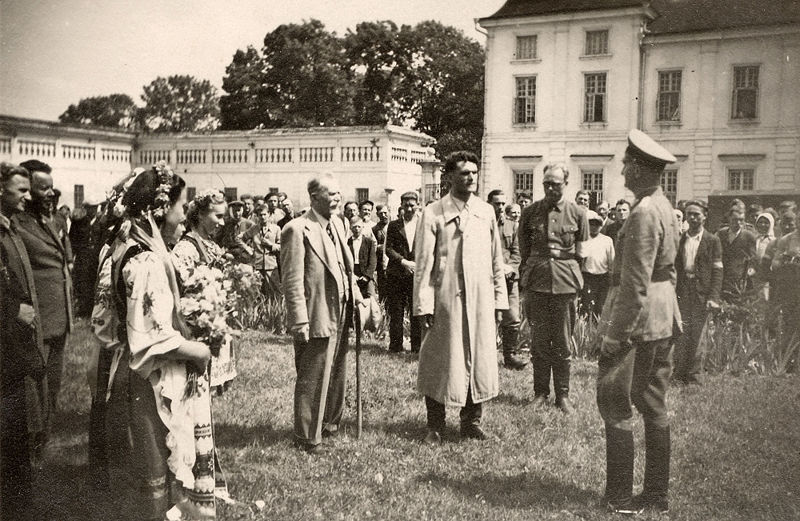For some, Stepan Bandera was a respected leader who became responsible for Ukraine’s liberation movement, while others described him as a Nazi collaborator. Most of the 15,000 people who attended the march, carried torches to mark Bandera’s 105th birthday.
Some of them dressed up in one of the uniforms assigned to Ukrainian divisions of the German Army during the Second World War, while others sang and shouted ‘Ukraine above all!’ and ‘Bandera, come and bring order!’ It is, however, known the fact that many of Bandera’s sympathizers, during his leadership for the Organization of Ukrainian Nationalists they didn’t agree with him collaborating with the Germans to try and gain Ukraine’s independence.
Stepan Bandera died 55 years ago and for most people in Western Ukraine he will always remain a fighter for freedom, while in the Eastern and Southeastern Ukraine, millions of people still consider him a traitor because of the ignorance he showed towards the Soviet Union’s struggle against the German troops that occupied that part of the country. He was the leader of Ukraine’s nationalist movement during the 1930s and 1940s, when he collaborated and fought with the Germans during World War II. People who at the time were on his side, said they went with the Nazis just because they hoped Adolf Hitler would grant Ukraine’s independence.
One of the supporters who marched through the city on Wednesday night, Ihor Mykolaiv described Bandera as a fighter for his country, for his faith and for his people’s ideals, but a man who has never been on Adolf Hitler’s side, the Star Tribune reports.
The truth is, he did accept money from Hitler at the beginning of the war, as the German troops were advancing across Poland and the Soviet Union. Their good relations, however, ended in 1941, when Ukraine’s independence was declared by the Organization of Ukrainian Nationalists and Bandera was sent to a concentration camp.
He was freed and taken back by the Germans in 1944, as the Nazis were worried about the Soviet Army, which was able to regain control over a good part of Eastern Ukraine. Therefore, to stop the advance, Bandera moved to Berlin and set up a headquarters there, to supervise the training of the Ukrainian Army by the Germans.
The Organization of Ukrainian Nationalists encouraged Ukrainians to take part in the ‘destruction’ of Polish and Jewish people, among other minorities, described by them as aliens.
Bandera was killed by the KGB in 1959, in West Germany.
